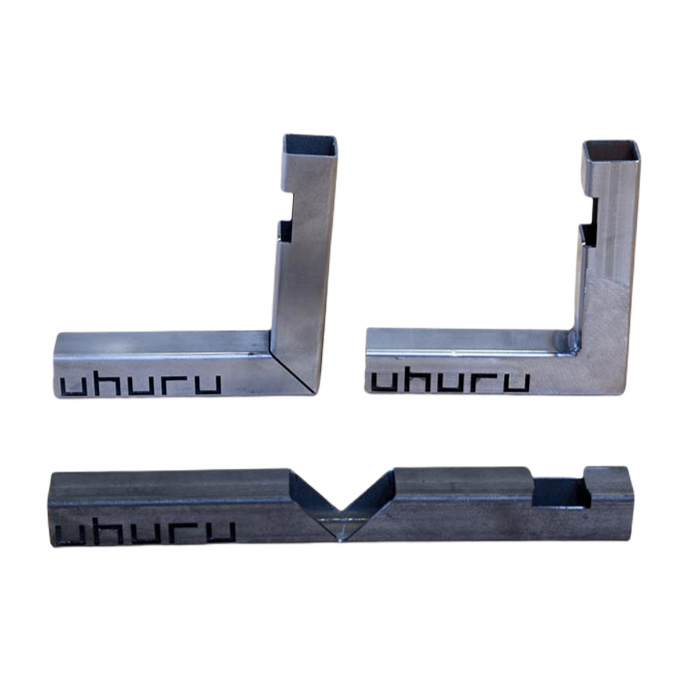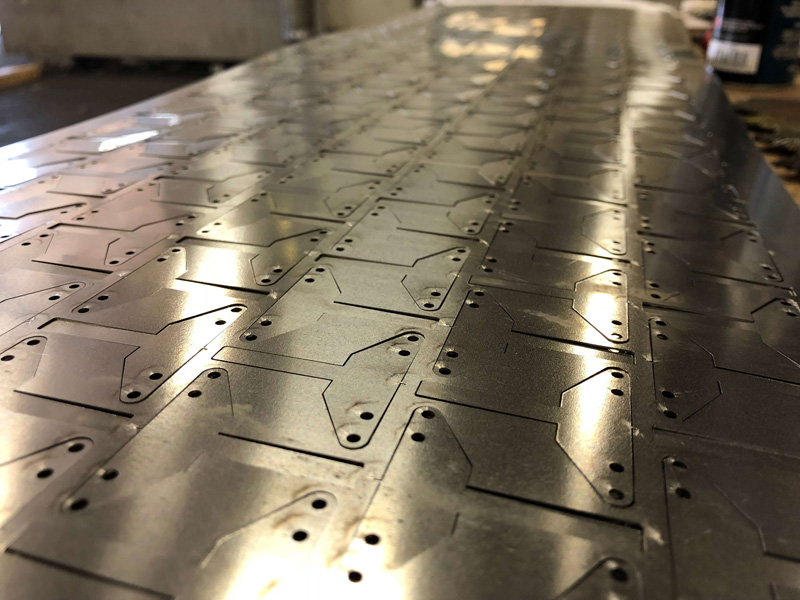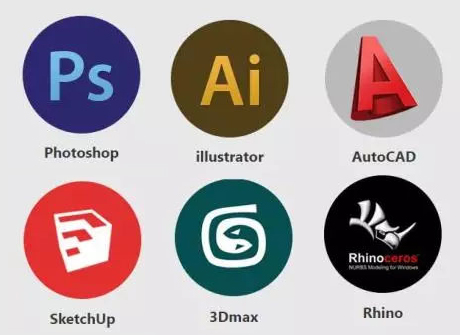
1.Our Capabilities for Precision Laser Cutting Parts
Laser cutting is a production technique that uses a beam of light to cut a wide range of materials and thicknesses. A laser cutter can vary in size greatly from small desktop LED-based lasers with a power of a few watts to extremely large industrial laser cutter machines that use powers in excess of 1KW.
Laser cutters are very similar to 3-axis CNC machines as both use an XY gantry that can move a tool around a workpiece, but while a CNC typically has a third axis for moving a tool up and down, a laser cutter will either have a laser module or a mirror that receives light from a stationary laser source.

2.Why Choose Laser Cutting Parts?
 Youlin® Laser cutting parts have some big advantages when compared to other manufacturing techniques. Firstly, laser cutters can provide precision cuts thanks to the precise nature of laser beams and their ability to only remove material directly under the beam.
Youlin® Laser cutting parts have some big advantages when compared to other manufacturing techniques. Firstly, laser cutters can provide precision cuts thanks to the precise nature of laser beams and their ability to only remove material directly under the beam.
Secondly, laser cutters can cut thin materials more easily and faster than standard CNC machines. This is due to the fact that a laser cutter bed uses a gridded design that does not need to hold the workpiece down when being cut. A CNC, however, is required to make multiple passes when cutting as well as being required to hold the workpiece down while also needing to leave bridges between the sheet material and the part being cut.
Another advantage of laser cutting is that it can be used to cut far more materials than typical CNC machines. Sure, CNCs can be used to cut thick metal, wood, and plastic, but lasers can cut a much wider range of materials.
Of course, one of the biggest advantages by far of laser cutters is that they are one of the cheapest methods of production. Unless a part is being produced in the millions, laser cutting will generally beat CNC, plastic injection moulding, and 3D printed parts.
3.Materials for Laser Cutting Parts
Youlin® Laser cutting parts can ues a wide variety of materials; the only criteria are that the material being cut can absorb the light from the laser beam and will vaporise on exposure and that it doesn’t let off corrosive gases that would harm the laser. Most woods, plastics, and metal including steel can be cut using laser cutters.
Of all materials that can be laser cut, plastic has a particularly nice edge finish as it partly melts. This leaves laser cut plastic parts with a smoother edge than a blade or bit that makes any shape look sharp and professional.
4.How to Make Laser Cutting Parts Work with Youlin?
 We can read 2D vector design files from a wide variety of softwares. The best file types to export for making are DXF, SVG, Ai or EPS files. As laser cutters can also engrave and produce cut-outs inside objects, we can recognize different colors in your file to assign to different cutting techniques.
We can read 2D vector design files from a wide variety of softwares. The best file types to export for making are DXF, SVG, Ai or EPS files. As laser cutters can also engrave and produce cut-outs inside objects, we can recognize different colors in your file to assign to different cutting techniques.
For example if you wanted to cut and engrave a part, you could use blue lines to represent a complete cut through the material and red lines to represent an engraving pattern. Engraving can be particularly useful when adding text and graphics to a shape for labelling purposes.
Once you have your design file ready, please contact us to have a quotation.
5. FAQ
Q: What is bad about laser cutting parts?
A: Laser cutting is great for creating complex shapes that are made from sheet materials that require precision. However, laser cutting is not great for very thick materials over 12mm as the laser beam converges at the focal point meaning that it loses its ability to cut. Furthermore, the laser cutting bed uses a grid meaning that it is not ideal for cutting very small parts as when these are cut they can fall through the bed and be lost.
Q: What precision do our laser cutting parts offer?
A: Youlin uses a wide range of different laser cutters depending on the material they are cutting. However, for all processes and materials, we offer at the very least a dimensional accuracy of ±0.13mm, a laser kerf of 0mm - 0.2mm, complex features down to 1mm x 1mm, and part sizes down to 6mm x 6mm.
Q: What kind of graphics can we get cut?
A: So long as your design does not have complex features under 1mm x 1mm and the size of your design is greater than 6mm x 6mm then you can have incredibly complex features. However, customers should be aware that very long and thin features may sag if the chosen material cannot support the weight of the protruding feature.